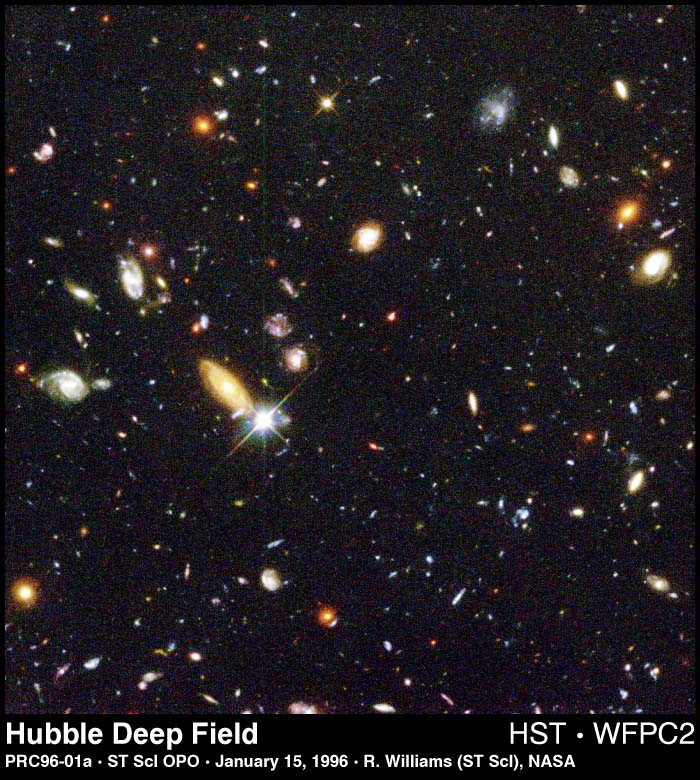
Note: In addition to the obvious hypertext links embedded in this page, several of the images below are "clickable" for more information. Please experiment, as this site is under constant development.
Caption: This image shows the thousands of galaxies detected when the Hubble Space Telescope was used to take a very long ("deep") exposure of one patch of sky. The space between the galaxies comprises the "Intergalactic Medium."
Caption: Optical Photograph of the Grand-Design Spiral M51 and its companion. Note the H II Regions dotting the arms of M51 and the dust lanes apparent in both M51 and the "tail" to its companion.
Caption: The edge-on spiral galaxy NGC 891. The dusty disk of the galaxy is evident as the dark band running along its length. The stellar bulge is obviously visible near the center of the galaxy. Click on the image for more on the vertical distribution of material in the ISM.
Caption: This optical photograph of the Horsehead Nebula in Orion summarizes many of the most important processes taking place in the ISM. The dark "horsehead" itself is caused by dust which extinguishes the background bright nebular emission. The reddish color of the nebula is produced by H-alpha photons (n=3 to 2 in H). Toward the lower left, one can see the high-density gas harboring the star-formation region NGC2024, its accompanying bright nebulosity, and a dark band produced by dust through its center. The young, bright massive stars in the region are seen surrounded by (bluish) reflection nebulosity.
Click here for more photos of the Horsehead and Other Nebulae .
Caption: Not far from the Horsehead Nebula, also in Orion, there is a very massive star-forming region known as "Orion A." The illustration above shows how the H II region created by the hot young star Theta 1C impinges onto the molecular cloud which is busy forming new generations of stars (photo credit: National Geographic Magazine)